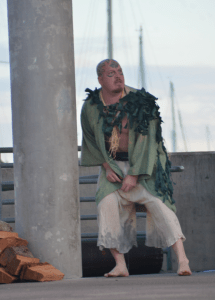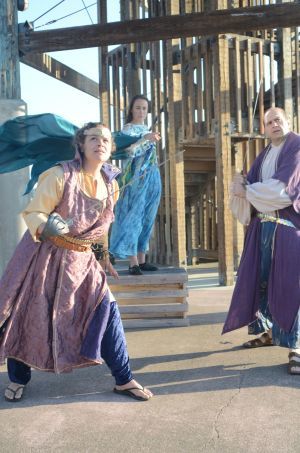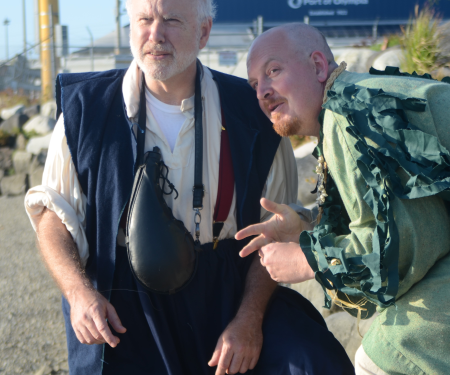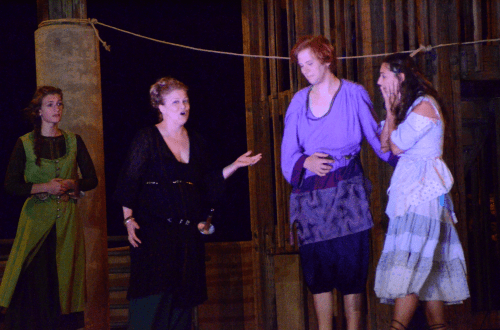Ned Hayes's Blog, page 6
August 18, 2019
The Tempest at the Port Plaza
 I’m a theater producer as well as a novelist and playwright. Many years ago, when I first moved to Olympia, Washington I saw a beautiful stage beside the waters of the Puget Sound, and felt that the stage needed a great stage production of William Shakespeare’s late play The Tempest. I’ve had many changes in my life in the last year, and as I may not be in Olympia in the further future, I wanted to take the opportunity to finally launch this production. at the Port Plaza tower, alongside the water of Budd Bay.
I’m a theater producer as well as a novelist and playwright. Many years ago, when I first moved to Olympia, Washington I saw a beautiful stage beside the waters of the Puget Sound, and felt that the stage needed a great stage production of William Shakespeare’s late play The Tempest. I’ve had many changes in my life in the last year, and as I may not be in Olympia in the further future, I wanted to take the opportunity to finally launch this production. at the Port Plaza tower, alongside the water of Budd Bay.
In summer 2019, I was excited to gather together a stellar band of local actors (many of whom I know), a talented director (one of my best friends, and an Emmy-nominated thespian), as well as a skilled technical crew. We launched our show with a tech preview on 8/14 and opening night on 8/15.
We’ve received wonderful early preview articles and a great opening night review!
The Tempest is on stage in a simply amazing production on the weekends through August 31, 2019.
You can find out more at TheTempestOlympia.com >>
Here are some production photos to enjoy!
You can find out more at TheTempestOlympia.com >>
The Tempest at the Port Plaza was originally published on Ned Hayes
July 21, 2019
Book Recommendation: The Gifts We Keep
 I had the pleasure of getting a preview of Katie Grindeland’s debut novel The Gifts We Keep, published by the student cooperative at Ooligan Press. Grindeland’s book was the winner of the 2016 Multnomah County Library Writers Project, and richly deserved this honor.
I had the pleasure of getting a preview of Katie Grindeland’s debut novel The Gifts We Keep, published by the student cooperative at Ooligan Press. Grindeland’s book was the winner of the 2016 Multnomah County Library Writers Project, and richly deserved this honor.
My endorsement was published as part of the Ooligan Press annual book catalog, and I’m pleased to recommend this interesting story of family, heartbreak and generational connection.
Grindeland works as a fire fighter and 911 responder and this novel is Grindeland’s first published book. I was impressed by her command of language, character and diction.
The new book was just published, and you can buy the book here.
I enjoyed seeing a stack of copies of The Gifts We Keep at the North Portland library today, and here’s a picture, so you can share the reading joy!
“ The Gifts We Keep by Katie Grindeland is a beautifully written book that weaves together a complex multi-voiced story that brings together voices of different generations into a complex quilted narrative of family separation, heartbreak and loss, along with redemption and reconciliation. A powerful and important book that echoes the best of Alice Hoffman and Anne Tyler.”
— Ned Hayes, author of the national bestseller The Eagle Tree
Book Recommendation: The Gifts We Keep was originally published on Ned Hayes
July 15, 2019
History of the Space Shuttle - Development
June 18, 2019 · by Alan Tatourian
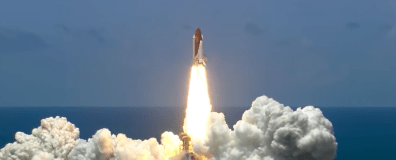
Links to the lectures:
Origins of the Space Shuttle or The Making of a new Program
Development of the Space Shuttle
Introduction by Jeff Hoffman
This is Aaron Cohen’s first lecture and a few minutes into the lecture Aaron reviews his personal history, both before, during, and after his NASA career, so I won’t give any more information about him here except to say that he was a wonderful man and a superb systems engineer. Aaron could be tough as a program manager and many engineers were certainly frustrated by his continuously having to reject their demands for changes in the systems that would increase cost or delay the schedule, but personally, everyone liked and respected him.
I was present at his NASA retirement party, and the warmth and affection felt for him by all the employees at NASA’s Johnson Space Center was really apparent. Aaron was a personal friend, and without him, this course would not have been created.
Aaron died in 2010 and we all miss him, but we’re lucky to have him on video and I hope you are going to learn a lot from him, both about the Space Shuttle in particular, and about general principles of systems engineering of which he was a master.
Let me now just make a few comments by way of explaining some of the things that Aaron refers to. At the beginning of his lecture Aaron talks about students working on the design of new space craft. Redesigning the Space Shuttle using 21st century technology was part of the assignment to students taking the course for credit back in 2005. In general I have tried to edit out references to this assignment but I leave this initial mention in just as a reminder to our online students that hearing lectures is only part of the education process. Ultimately, you have to use the lecture material to do projects and solve actual problems in order to cement your knowledge. You won’t be doing a design project as part of this online course, but I hope that at least some of you engineering students out there will be able to make use of what you learn here in your engineering careers.
Aaron mentions early work with the MIT instrumentation lab, and then he refers to the Draper Lab. Charles Stark Draper or doc Draper, as he was always referred to, became famous for his work in the development of inertial navigation systems. He was head of MIT’s Aeronautics and Astronautics department, and he created the instrumentation lab which at that time was part of our department. The first contract that NASA made as part of the Apollo program was with the instrumentation lab to develop the computer in inertial guidance systems for Apollo. In the early 1970s, the instrumentation lab became an independent non-profit entity renamed as the Draper Lab.
Draper formally separated from MIT, although we still have close ties and many faculty and students in the Aero/Astro Department at MIT work closely with Draper scientists and engineers.
At the very end of Aaron’s lecture we had to edit out some irrelevant comments, so the lecture presented here ends quite abruptly with a few comments on it by Aaron on various aspects of systems engineering as they applied to the design of the Space Shuttle.
So, here’s Aaron Cohen’s first lecture about the early development of the Space Shuttle.
Program Management Decisions
 You are going to have a very unique opportunity, you’re going to have people speak, lecture you on the various Shuttle sub-systems in quite a bit of detail, you’ll have some people that will be very, very positive about the Shuttle, that think it’s a great design, a great operation, you’ll have others that will not think it’s so good, and you’ll have some that will give you just a detail technical approach of what happened.
You are going to have a very unique opportunity, you’re going to have people speak, lecture you on the various Shuttle sub-systems in quite a bit of detail, you’ll have some people that will be very, very positive about the Shuttle, that think it’s a great design, a great operation, you’ll have others that will not think it’s so good, and you’ll have some that will give you just a detail technical approach of what happened.
What I would like to suggest to you for your good and for the good of the future – future students, future designers, – that you ought to come up with your own decision: Was it the correct design? Should it have been done differently? And if so, why and how would you do it? I think that’ll be good for you when you get to work on future projects. It will also be good for NASA because this is something we could turn over to NASA. So I think it’s a very valuable thing to do. I would suggest you do that as you go through the course, and I will be happy, very happy to talk to you about any of your ideas that you have through the internet, through e-mails, or in personal discussions, and you might want to do this later on as a semester develops.
A little bit what I’m going to say today really starts off on where Dale Myers, the previous speaker left off, and it gets in a little bit more detail. As this course develops, you will get more and more and more detail. But let me start off again, just very much like they Dale did, and talk about the Shuttle history.
In 1952, a fully reusable launch vehicle concept was discussed. People are interested in that.
In 1962, fully reusable vehicles were seriously considered. The Air Force studied project Dynasoar, which was canceled in 1969.
In 1969 NASA adopted the idea of a fully reusable spaceship.
I became the orbiter project manager for NASA in august of 1972. At that time I also was a manager of the systems engineering organization for the first two years. I graduated from Texas A&M University in 1952 and went to the army, went to Korea. Then when I came back, I went to work for RCA where I worked on microwave tubes, the microwave oven. Everybody has a microwave oven now. In 1954/1955, when they came out, they were about 3,000 dollars a piece. So when I told my wife that I was working on something called a microwave oven and we were going to be able to cook a roast in a couple of minutes and a potato a couple of minutes and she looked at me and she said: That will never sell. Then I worked for General Dynamics on the Atlas and Centaur and then in 1962 I went to the Johnson Space Center and worked very closely with the MIT Instrumentation Lab, now the Draper Lab, on the guidance and navigation control system of the Apollo program. I became a head of systems engineering in Apollo and then the manager of the command and service module in Apollo. Then in august 1972 I became the manager of the Space Shuttle orbiter. Then I became director of Research and Engineering at Johnson Space Center and then I became director of the Johnson Space Center, and then for a while I was acting deputy administrator in Washington. And then I retired and went to Texas A&M to teach, and then Jeff asked me to come do this, and I’m very happy to be here.
There was specifically a systems engineering group at the center which was separate from the project offices. It’s something which is probably worth talking about at some point.
In Apollo we sat around the table for many days and months trying to figure out how you define systems engineering. We would not even know what systems engineering was. In fact, today I’m not sure you’ll get a clear definition of what it is. As we go through the lecture, I’m going to give you some examples of what I think systems engineering is and how it is used.
Something is very key in any design and something you really need to pursue whenever you do a design project is understand the requirements, because if you don’t understand the requirements you may get a very good product that’s useless. You got to understand what your customer wants, the top level requirements.
Top level Shuttle requirements
Fully reusable
14 day turn around to next flight
Deploy and retrieve payloads
Design, development, & test phase estimated to be 5.1B in 1971 dollars
Original cost per flight for 65,000 pounds was 10.5M per flight in 1971$ for a flight rate of 60 per year
One of the things that was handed down to us, the Shuttle was supposed to be fully reusable. You’re supposed to be able to turn the Shuttle around in 14 days, you have to deploy and you have to retrieve payloads, design, development, and test is estimated to be 5.1 billion in 1971 dollars.
As we started working on the Shuttle, the headquarters took away two years of inflation. Were they to give us those two years of inflation we would have met the 5.1 billion in 1971 dollars. Dale Myers fought for that but lost. The reason we missed this target was due to the calculation of the original cost per flight for 65,000 pounds which was 10.5 million dollars per flight in 1971 dollars, but for a flight rate of 60 flights per year.
When I told my wife I was doing that, and she’s been around a space program for a long time, she said: You never agreed to that, did you?
60 flights per year is pretty hard to do but that’s what we came up with at the time.
Dale mentioned the Air Force requirements but here are the studies.
Shuttle studies
Phase “A” studies were conducted to determine basic requirements and their effect on design in 1969
Principal issues:
Size and weight of payload
Cross range of the orbiter
Heat-resistant structure or reusable insulating material
Hypergolic reaction control system or liquid oxygen/hydrogen
Fly-by-wire flight control system
Wind tunnel tests to determine wing size and configuration
Air breathing engines were considered for fly back; later were determined to be too heavy
Entry techniques
Landing speed
Approach pattern
Phase “B” studies were performed in mid-1970’s to determine a preliminary design
Results:
Fully recoverable orbiter
Disposable fuel tank
Parachute-recoverable solid rocket boosters
High performance hydrogen-oxygen engines placed in the orbiter to be recovered
The Phase “A” studies were conducted in terms of basic requirements and their effects on design in 1969. The principal issues were the size and weight of the payload, the cross range of the orbiter, and what kind of heat material were you going to use. You got to recognize that we were going to use the heat-resistant structure, a reusable insulating material. You got to recognize that our background was a Mercury Gemini Apollo, and they all use an ablative material. An ablative material cannot be reused because basically the surface changes. You had to have some kind of insulating material so the surface did not change.
The principal issues in the Shuttle studies were, should the reaction control system be liquid oxygen/liquid hydrogen or should you use a hypergolic system. The Reaction Control System is a propulsion system that controls the vehicle about its center of gravity, it’s for attitude control basically. It’s a storable system and presents a major decision. The hypergolic fuel is a fuel like hydrazine, it is an oxidizer and a propellant in the same fuel.
The other issue was a fly-by-wire flight control system. Now everything has a fly-by-wire, all the military jets have it. For us the decision was, was it going to be a digital computer control system or were we going to have cables to fly the machine.
Wind tunnel test determined wing size and configuration. That is a very difficult thing to do, but this is starting to get into what you might say is systems engineering.
Airbreathing engines were considered for fly back and later determined to be too heavy.
Still we had to complete studies of the entry techniques, landing speed, and the approach pattern.
The Phase “B” studies were performed in mid-1970s to determine the preliminary design. The results showed a fully recoverable orbiter, disposable fuel tank, parachute-recoverable solid rocket boosters, high performance hydrogen-oxygen engines placed in the orbiter to be recovered.
This was all systems engineering that led up to the design. So you have systems engineering in various phases of the program and usually systems engineering composes of an interdisciplinary team that has been given some assumptions, some constraints, they have some top level requirements, they do an iterative process with some tools such as computer tools for calculation of loads and flight mechanics and they come up with the iteration of what the design is going to be. So that’s basically how it was done.
Results of studies
Fully reusable with fly-back booster was greater than 5.1B.
Many configurations were studied (examples)
Turnaround time of 14 days required landing a winged vehicle on a runway
Payload deployment and retrieval requirement determined location of orbiter on launch configuration
Those were the ground rules. Once we started putting the total system together we showed that the fully reusable with a fly-back booster was greater than 5.1 billion dollars, so that was thrown out.
Now, there is a question, and that’s why I asked Dale, should we have said, “Hey, we need money to really have a fly-back booster.” But they gave us a constraint of 5.1 billion dollars in 1971 dollars and it didn’t make it.
Many configurations were studied and the turnaround time of 14 days dictated landing with a winged vehicle on a runway. You weren’t going to be able to land in the water or with a parachute. You would have to land it on the runway so you could quickly turn it around in 14 days.
The payload deployment and retrieval requirement determined the location of the orbiter on the launch configuration, because if you look at that large payload bay, it would be very difficult to put that on top of the vehicle.
 Final Design Refinement – 1972-1973
Final Design Refinement – 1972-1973Once that was done, we could see what the design was starting to look like. The first picture is the Agency Commitment in March of 1972, in May of 1972 we had the North American (NAR) proposal, and then I became orbiter project manager in August of 1972. PRR is the Preliminary Requirements Review. We made some changes and the production commitment was made in May of 1973.
 Comparative Launch Costs
Comparative Launch CostsThis chart shows in 1971 dollars cost per flight for the Thor, the Atlas, the Titan-3iC, the Saturn 1B, and the Shuttle. That’s payload to orbit. You can see that the thing that was really missed in the Shuttle was the 10.5 M dollars cost per flight.
Major Shuttle configuration decisions
Hydrogen/oxygen main engines
This sized the liquid oxygen/hydrogen tank, which is not reusable
Solid rocket boosters provided the additional propulsion required to get the orbiter into earth orbit
Solid rocket boosters designed to be recovered and re-used
Here are some of the major decisions. We were going to go with a hydrogen/oxygen main engine. That’s one of the system problems, the decision what kind of engine you’re going to use sizes the external tank. Because of the equations of motion you can figure out how much propellant you need, you get the density of the propellant, and now you know what size of tank you need. Solid rocket boosters provided the additional propulsion required to get the orbiter in orbit, and the solid rocket boosters were designed to be recoverable and reused. Those were some of the system studies that led to the configuration.
Orbiter decisions
Orbiter entry cross range required delta wings
Deletion of air breathing engines for moving orbiter required the Boeing 747 to carry the orbiter
FO/FS guidance, navigation, and control system
Fly-by-wire with a digital auto pilot
The orbiter entry cross-range maneuvering capability required delta wings, to go 1,100 nautical miles cross-range, you needed delta wings.
 Space Shuttle on 747
Space Shuttle on 747Deletion of air breathing engines for moving orbiter required the Boeing 747 to carry the orbiter. When we landed it at Edwards Air Force Base, we put the orbiter on top of the 747 and we flew it back to Kennedy. I became a project manager in August 1972 and I was having all sorts of problems. The first thing they did to me was they cut my budget in half. But I had worked on the Apollo program, I had a lot of friends in the organization. Three of my friends came into the office one afternoon maybe two or three months after we started, and said: We got a great idea! I said: What’s that?
– We could put the orbiter on top of a 747 or DC-10, and fly it back to Kennedy from Edwards Air Force Base. We may have to make one or two stops.
I looked at it for a moment, then I said: That is absolutely the dumbest idea I’ve heard in my life! I basically threw the people out of my office. They were friends. These people would not take no for an answer, that happened to be another very good quality, they were all world class model airplane builders and these guys had won competitions all over the world, three of them. They came back about 10 days later and they said: Come out, we want to show you something. They had built a radio-controlled model of the 747 and an orbiter and actually flew it for me and separated the orbiter from 747. That’s how it got started. And so we eliminated air breathing engines.
If you recall, when the orbiter lands, nose landing gear is very short. What we had to do, we had to actually replace the landing gear with a different landing gear that caused the orbiter to have a different attitude pointing nose up, and not nose down with its own gear. We put air breathing engines on, and we took off, and we had to have five in-flight refuelings to get from California to Florida.
And of course, we went with fly-by-wire with the digital auto pilot. This was a very fundamental change. The astronauts at that time did not like this very much. Fly-by-wire means that you have a computer that controls the surfaces where in past airplanes your stick actually had cables that controlled the surfaces. So, you get a lot more performance.
It’s a little bit confusing in the sense that a wire, you might think of it as a hard wire which is like the old type of an airplanes where there was a cable, so that when you pulled on the stick there was actually a cable, which went back to the ailerons and the rudder and everything. Everything now has a computer in the middle and what you’re really doing is flying the computer and the computer then issues the commands to the hydraulic system. The Shuttle was the first vehicle that really had that system. There were no commercial planes flying with that system. The real concern was with safety and reliability. Suppose you have a computer problem, what are you going to do?
Cross-range. The orbiter is a glider, not much of a glider but a glider nevertheless, and it will have a down-range and the cross-range would be out-of-plane, so you can actually maneuver out of plane. This was designed for the military requirements. They wanted to be able for reconnaissance satellites to launch into polar orbit. Because you’re going around over the earth poles as the earth turns underneath, you fly over all parts of the earth. They wanted to be able to launch out of Vandenberg on the West Coast into a polar orbit and because of security reasons, in a time of crisis, remember we were in the Cold War and everything, you wanted to be able to put a satellite up without necessarily giving the other side a chance to make all the radar measurements on the Shuttle and everything and figure out right away where the satellite is, and also there might be hostilities – the Shuttle was a strategic asset. They also wanted the Shuttle to be able to land the very next orbit. Well, alright, you take off from California, you fly over the pole, you deploy your satellite, and by the way, we have never ever with all the satellites we’ve deployed, we’ve never deployed a satellite on the first orbit, that would be an incredible feat, but that was the requirement. So you fly over the pole, you come back around, now you’re ready to land in California, but during that time the earth has turned by a 1000 miles – 24,000 mile circumference in 24 hours, actually 1,500 miles because in orbit is 90 minutes, one and a half hours. Your orbit now would put you right over the Pacific Ocean. If you just burn your engine, slow down and come down through the atmosphere, that’s where you’re going to land. Instead, as you’re flying through the atmosphere, you basically have to come down banked on your side and essentially you’re generating a lift vector, and instead of turning your lift vector up, you turn your lift vector to the side and that pushes you over, and delta wings can generate a higher lift vector than the straight wings and that was the determining factor.
Here’s a recent (2016) explanation by a Shuttle pilot Bret Copeland.
Orbiter Decisions
Size of payload bay 60 feet long by 15 feet diameter
Size of crew cabin defined to be over 2600 cubic feet
Payload 65,000 pounds at lift off and 35,000 pounds at landing
The orbiter is a launch vehicle, a space craft, and an aircraft
Here’s a very important requirement that you need to understand: the orbiter is a launch vehicle, it’s a space craft, and it’s an aircraft.
When you look at the two different systems, Apollo and the Shuttle, there’s no question that the Shuttle is much more complicated than Apollo. On the other hand, the Apollo mission is much more complicated than the Shuttle’s, but that’s something that makes it very, very interesting.
 Space Shuttle System
Space Shuttle SystemLet’s now talk a little bit about configuration. You might say, “How did you go from that conception of August of 1972 to something with all these numbers on it?
This is really a case in systems engineering. Let me explain to you what I mean by that. There were certain assumptions had to be made. One assumption was that the orbiter weigh was going to be about 175,000 pounds without payload and you were going to have a 65,000 pound payload. You had to make that assumption. You also had to make an assumption that you were going to use a liquid oxygen/liquid hydrogen engine. And why did you select that? Today I’m not quite sure it was a good decision, but we did decide. Why? Because of a specific impulse, the ISP, or the performance of the engine was the highest for the liquid oxygen/liquid hydrogen chemical propulsion. So we selected that.
When you use the equations of motion, you integrate the equations of motion, or you use any other techniques you may want to use, you then show how much propellant you’re going to need to get that into orbit. Then you know that liquid hydrogen has a density of about 4 pounds per cubic foot. Very low density. That means, this big external tank is mostly hydrogen. It’s a very, very big volume. Liquid oxygen is about 70 pounds per cubic foot. So that basically sizes your external tank.
That’s a very simple applied approach but that’s systems engineering. You do more than one iteration because there’s an old adage that the devil’s in the details. You keep iterating on that with this expert team and you then say, “Well that’s still not going to be the most efficient way to get you to orbit.” You really need a stage system. You put the solid rocket boosters on and now you don’t have a single stage, you have more like a two-stage to orbit. Then you size the solid rocket boosters and you determine when they have to come off.
Basically, that is how you go about doing the systems approach using systems engineering to come up with a configuration. That’s a very over-simplified way of doing it but that’s basically how you do it. And these are some of the dimensions that then come out of the vehicle. That shows you all the dimensions of the space Shuttle system, the solid rocket boosters the external tank, and the orbiter.
An interesting sidelight in this, which I got to thinking about after the Columbia accident where the foam came off. Of course, the reason why we put the foam on was because with liquid oxygen/liquid hydrogen at those temperatures you’re going to have a lot of ice form, and when ice forms and comes down and hits the orbiter you’re going to do some damage to the thermal protection system. One solution would be to put foam on the tank to eliminate the ice. Of course, you would assume that foam could stay on the tank. Another solution would have been to not go with a liquid oxygen/liquid hydrogen engine, go with what we call storables. Of course, they wouldn’t have as much performance and you probably couldn’t put 65,000 pounds of payload to orbit.
The point of bringing this to you, those are some of the decisions you have to make. As you go into various projects you need to challenge the requirements because the requirements are really going to decide what kind of system you’re going to have.
That’s the basics of how the system evolves. I over-simplified it quite a bit, but you have realize there are a lot of iterations through this process.
One other key thing, when you have a systems team, when you do systems engineering, you’re doing it in a team, you usually have different capabilities on the team: mechanical engineers, electrical engineers, you have different types of disciplines on your systems engineering team that can help you do that and then you have a systems engineer that heads that all.
Mission Profile
 Typical Space Shuttle Mission Profile
Typical Space Shuttle Mission ProfileThe other thing that’s interesting is what the mission profile essentially looks like. This happens for STS-5, but this is the basic mission profile.
One time, when I was director of the Johnson Space Center, I had Mr. James Baker who at that time was Secretary of State and Eduard Shevardnadze from Russia who had the same position in Russia, I took them over to Mission Control and put Mr. Shevardnadze into a flight controller seat and was going to let him talk to the crew. Not knowing that Jeff Hoffman was on duty at the time, Eduard Shevardnadze spoke Russian up to the crew, and before the interpreter could answer it, down comes this beautiful answer in Russian from Jeff Hoffman. That really floored Mr. Baker, Eduard Shevardnadze, and me.
The profile of the Shuttle mission is as following: You lift off and you’ve reached max dynamic pressure in about one minute or about 30,000 feet, you have the SRB separation in about two minutes, in the Challenger accident I believe it happened in about 60 seconds, but in two minutes you have the SRB Sep (separation) and the SRB landing is by parachutes. You have MICO, which is main engine cut-off, the main engine cuts off and that, to me, is the biggest issue. That main engine has to burn for over eight minutes, that’s taking all the propellant out of that big tank, the liquid oxygen/liquid hydrogen, firing the main engines to get you to orbit.
At the top of this diagram you see Main Engine Cutoff. Orbital velocity at the cutoff is with a few hundred feet per second.
And then you get External Tank (ET) separation. The external tank comes down about 9,000 miles downrange and lands in the Indian Ocean.
Then you use the Orbiter Maneuvering System, the OMS engine of pods on the back of the Orbiter, for a very short period of time to have a final tune to get into orbit.
Then you have your on-orbit operations, whatever you’re going to do, go out and service the Hubble or whatever.
You de-orbit with the OMS engine.
You have entry interface at 400,000 feet. This is the elevation at which you start sensing gravity, you get about 0.05 G’s at 400,000 feet, and then you reenter and land at Edwards or Kennedy.
 Roll maneuver
Roll maneuverThe Shuttle turns during lift-off. This is because we used the Apollo launch pad and the ditches for the flame bucket where the engine goes. Because the Shuttle was not orientated correctly on pad and in order to get it to the right attitude we had to make that roll maneuver.
Russian Buran did the same roll maneuver at the lift-off. Dan Brandenstein, who one time was head of the astronaut office, saw that the Russians made this roll maneuver, and he asked the Russians: Why do you make that roll maneuver? They didn’t have to do it. They said, “Because you do.”
There may be one other aspect to it and that is the question of why does the Shuttle actually fly upside down on the way up. And the original decision was with aerodynamics. The thrust is asymmetric. You have the external tank, and the Shuttle is sitting on the external tank, and so the thrust actually has to be through the center of mass of the whole system, so it’s actually flying not straight but it’s a little bit skewed. And for aerodynamic purposes they figured there was less stress. Although recently they’ve started partway through the launch another roll maneuver, and that’s for communications. The early part of the launch when you’re riding the solids aerodynamically, when you go through Max Q, you’re in much better shape if you’re upside down.
When you’re doing flight design, depending on whether you’re going to launch east into a 28 degree orbit or a high inclination orbit, the placement of the external tank re-entry is a major, major flight design. Often the trajectory has to be shaped to be not quite as efficient as it might otherwise be because you have to control the landing of the external thing. The external tank breaks up, some of it burns in the atmosphere and some gets down back to the ground. The tank is mainly aluminum. Remember, the liquid hydrogen/liquid oxygen inside evaporate and they are non-toxic.
Solid rocket booster environmental problem is a real problem that had to be solved. I worked on you trying to get the Galileo cleared because of a radio nuclear thermal generator on it. To get that cleared going into orbit was a big job which I thought I’d never finish but we finally got it cleared. It’s a very tough job to have RTGs cleared to be launched.
I don’t remember specifically all the noxious chemicals that come out of the solid rocket boosters but it is pretty nasty stuff. I remember one of my launches, the families and guests were taken to a launch site viewing area about three miles inland from the launch pad and it just so happened that the wind was blowing onshore that day. It was an afternoon launch and my brother is a real space nut and he always liked to watch as the rocket after about seven and a half minutes sort of disappears over the horizon, but after about five minutes the solid rocket exhaust was actually approaching the spectator area because of the wind blowing and they made everybody get on the buses and drive them away so that nobody got injured and my brother was really annoyed because he didn’t want to leave.
 US Space Shuttle vs. Russian Buran Shuttle
US Space Shuttle vs. Russian Buran ShuttleI’m assuming that everybody is aware that the Russians at one time had a space Shuttle program, and they have manufactured a vehicle which looked almost identical, not exactly, but almost identical and it was no accident because they used our plans and they only ended up flying it once, and they actually flew it unmanned and, despite a little bit of nail biting during the landing, they did recover it successfully and then they discovered just what we had discovered was that it is a lot more expensive to operate than they had anticipated, and they had a lot less money than we did so it basically never flew again. They had crews of cosmonauts who had been training to fly the Buran.
There were actually two differences. The first was that they put the engines on the external tank. I think that this did two things. First of all, it did improve the performance. And also the Russians turned out engines on assembly lines basically. They turn out a tremendous number of rocket engines. I don’t know the details of the performance of their engines, how their main engines compared to ours. I think they actually had four engines, if I remember.
The orbiter was a glider. There was no difference, it was an unpowered glider.
The other thing, they did learn one thing from us, when you have a delta wing vehicle, you’re very, very sensitive to the center of mass of the system, and it was a problem because the orbiter, when it flies back through the atmosphere, it hits the top of the atmosphere at Mach 25, and then it flies all the way down to subsonic, and the control characteristics and stability characteristics change throughout that flight envelope, and we will have a lecture specifically on the aerodynamics of the Shuttle, but it turns out that the Shuttle is extremely sensitive to the forward CG, and I think it was around the Mach 3 flight regime, if you’re just an inch or two forward of a critical area in the CG, you can lose control.
They always do a weight and balance on the Shuttle before launch, and on many flights we’ve actually had to put lead ballast in the Apt engine compartment of the Shuttle just to get the CG far enough back to get Mach 3 stability. I hate to tell you how many tons of lead we’ve launched over the course of the Shuttle program because of the CG. And if you look at the delta wing profile of Buran, it is slightly different from the orbiter because I guess they learned the lesson and so they were not as sensitive to the CG. But of course, once you build an orbiter, you can’t really change it. And so, we were sort of stuck with it.
The other concern was that with the thrust behind the orbiter and large mass in the tank you get what you call Pogo oscillation effect. One concept that Max Faget had early in the program was to have a swing engine, have the engines fire on the back of the tank and then, when you get ready to separate the tanks, swing the engines back in the orbiter and bring them back in the orbiter. We threw that out because that was a complicated mechanism.
You’re going to have a discussion on mechanisms and mechanical systems. Everybody could design them, but everybody has a hard time making them work. When you put up a mechanism, when you put up electrical schematic, not everybody accepts. When you put up a mechanical drawing of a mechanical system, everybody’s got an idea how it is supposed to work.
 Shuttle on Mobile Transporter, heading to Launch Pad
Shuttle on Mobile Transporter, heading to Launch PadHere’s the picture of a vehicle when it rolls-out of the assembly building, there it’s stacked on a crawler which takes it out to the pad. This crawler was used for Apollo.
Is anyone familiar enough with Apollo to be able to say what the fundamental difference is with the crawler mechanism here and the crawler in the past? If you look at the picture of a Saturn rocket being rolled out on the crawler, the whole launch tower was on the crawler, and so they rolled the whole thing out. With the Shuttle it’s a little different. I’ll be bringing in some pictures at some point to show you some of these details.
 Space Shuttle vs. Saturn V
Space Shuttle vs. Saturn VThey cut off the top part of the Saturn launch tower because the Shuttle stack isn’t quite as tall, and they added a movable what is called a payload change-out fixture.
 Endeavor on Launch Pad 39A
Endeavor on Launch Pad 39AOnce the Shuttle gets on the pad, the whole enclosure roles over and forms a kind of a hermetic seal around the Shuttle so that you can open the cargo bay doors which, by the way, can’t support their own weight in one G, so you have to put an external strong back on them.
 Payload Changeout Room
Payload Changeout RoomYou put the payload in this payload canister here that’s installed in the change-out room and then it’s swung over, the doors are opened, the payload is installed in the bay, and then this forms a protective enclosure over the Shuttle, and it’s not swung back usually until the day before launch.
 Rotating Service Structure around Shuttle
Rotating Service Structure around ShuttleThis is another detail in systems engineering. You go in from that schematic or that little plan of the orbiter, and you did iterations of the size, and then you do the iterations of the launch complex, how it’s going to be put payloads in, and that’s all systems engineering, levels of systems engineering.
It’s very easy to say: Well, we’ll just put the payload in on the pad. But the actual development of the mechanisms to do that is extremely complicated. What amazes me is that it has to be done essentially in a clean room environment. You are up there crawling around the pad inside the payload change-out room in white coats, buddy suits, and gloves on, and outside the wind is blowing and it could be raining and sand blowing by. And the whole thing has to be done in a clean room environment but it’s on the scale of a Naval Ship Yard. This is a huge vehicle. It’s really a challenge.

In all honesty it’s one of the reasons why the cost per fly has gone up. The original concept, when Dale Myers was Associate Administrator for manned space flight, we concluded that this will be very simple: we were going to make very standard payloads, you went and put the payload in, fixed it in, we were going to launch and deploy it, and then come back. Of course, that all changed, the missions became very complicated and we didn’t do that.
That’s another important point though. You better be sure when you get to be a project manager or manager – understand your requirements, understand your customer’s need. As the ground rules change your performance is going to change. You need to understand that.
We had cases where we had a bird on launch. One of the things you do, you fire dead chickens into the window to see if you could break the window and the system. You do that for an aircraft also. I remember one simulation where in the simulator right at lift off the instructor came in and threw a rubber bird in the commander’s lap and said: You’ve just been incapacitated by a bird strike. And so the co-pilot had to take over and fly it.
You should realize the Kennedy Space Center is a wildlife sanctuary. There’s a lot of birds, there’s a National Wildlife Sanctuary Park Rangers, there’s eagles in the nest, there’s a lot of turkey buzzards. There’s a landing strip right in the middle of the bird sanctuary and so, before the Shuttle gets ready to come in, they send plains to buzz the runway and scare the birds away.
They also had a problem at one point with woodpeckers. Woodpeckers decided that the external tank insulation was a good place to find bugs. It sounds funny but think of what that potentially could mean. They had loud speakers and stuffed owls and everything which they ended up putting around to scare away the woodpeckers. These are things which the original systems engineering never took into account.
Let me talk a little bit more about Systems Engineering. As Dr. Hoffman mentioned, you have the three-legged stool of cost, schedule, and performance. And that is a continual trade-off as you go through a system engineering program. The things you have to look at, the things that cause program managers and project managers to lose their job, first, you’re going to recognize that you have a weight increase in the vehicle, whatever you build is going to cause weight increase. The next thing you’re going to have is a schedule slip. And then when you put those together you’re going to have a cost increase. And then you’re going to have technical problems. And those are disastrous cases for a project manager. Those are the reasons to fire somebody. Luckily I made it. I made it because of a man that you’re going to hear talk, Chris Craft. He was my immediate boss and he ran interference for me and he’s a good man to have on your side running interference for you.
We were trying to get the cockpit laid out. It was very important to get the cockpit laid out and I wanted the crew to have their inputs. You want the crew to be a part of laying out the cockpit. I called the head of the astronaut office over and I said: We need to lay out this cockpit and you need to come back to me with a decision of how you want the cockpit. He said, “I can’t do it. I’ve got 100 astronauts over there and they won’t agree.”
I said, “I’ll tell you what you do. You tell them that you give them two weeks and then I’m going to do it.”
And that really scared him because I didn’t know anything about laying out a cockpit. And we had a cockpit laid out.
So sometimes you have to use management techniques.
History of the Space Shuttle – Development was originally published on Ned Hayes
July 8, 2019
The Day Jobs of 10 Famous Writers
Any successful author will tell you that before they hit the literary bigtime, they had to do a whole lot of hustling to support their writing habit. On July 5, 1880, playwright George Bernard Shaw was able to quit his day job, but some of these authors continued to work at their 9-to-5’s even after they were published. Here are the day jobs of ten of our favorite writers:
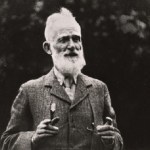 George Bernard Shaw: Telephone company employee
George Bernard Shaw: Telephone company employeeGeorge Bernard Shaw took his last day job at the Edison Telephone Company in his early 20’s, where he worked in a basement in London and performed “demonstrations” for visitors of how telephones worked. As he humorously commented in his preface for The Irrational Knot, he said his audience was typically uncertain “as to whether they ought to tip me or not: a question they either decided in the negative or never decided at all; for I never got anything.”
Frank O’Hara: Museum clerk
The famous poet of the New York School of the 1950s and 60s got his paychecks from the Museum of Modern Art, where he worked as a clerk at the information desk, a shop employee, and eventually as an associate curator, a position he held even as his literary career flourished with the publication of Lunch Poems in 1965; in fact, many of his poems were written in his MoMA office or on his daily lunch break.
Arthur Conan Doyle: Surgeon
The creator of Sherlock Holmes was, like Holmes’ sidekick, a physician by trade before he became a famous writer. He served as a surgeon in South Africa during the Boer War and on a ship during a seven-month Arctic expedition. In fact, the inspiration for his deductive detective came from a surgeon he met while he was a student at Edinburgh University, who could determine information about a patient’s job, activities, and habits just by observing them.
William Carlos Williams: Physician
Another doctor-cum-author, Williams was a pediatrician and obstetrician who practiced in Rutherford, New Jersey. However, unlike Doyle, Williams never gave up his medical career; he held a private practice for 40 years, writing poems on prescription pads between house calls. Due to Williams’ relative obscurity in his lifetime, most of his patients had no idea that their physician was also a poet.
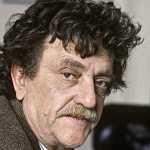 Kurt Vonnegut: Car salesman
Kurt Vonnegut: Car salesmanKurt Vonnegut, who previously worked as a police reporter and a public relations writer for General Electric, had a short stint as a manager of a Saab dealership in Cape Cod to support his family, an experience he wrote about in his essay “Have I Got a Car for You!” which was collected in A Man Without a Country.
William S. Burroughs: Exterminator
In addition to being, at various points in his life, a robber, drug dealer, bartender, and private detective, William S. Burroughs was a door-to-door exterminator in Chicago in his youth, despite (or perhaps because of) his apparent hatred of insects; Burroughs wrote a short story, Exterminator!, based on his experience with the job.
Wallace Stevens: Insurance lawyer
The Pulitzer Prize-winning Wallace Stevens spent years of his life working in insurance, first as a lawyer and then as a vice president of the Hartford Accident and Indemnity Company in Connecticut, where he worked from 1916 until his death in 1955. Throughout his life, he managed to balance his family with successful careers in business and literature; in fact, he even took an eight year hiatus from poetry after the birth of his daughter to focus on his insurance work and parenting.

Margaret Atwood: Barista
As Margaret Atwood wrote in her essay Ka-Ching!, her first job was at a coffee shop in Toronto in 1962, where she worked for a summer to help pay for her education. Even though she had little experience, the job proved not too difficult, except for a broken cash register that frustrated the soon-to-be Governor General’s Award winner so much that she had to quit.
Charlotte Brontë: Governess
The author of Jane Eyre drew on personal experience to create the title character of her most famous novel, as Bronte herself was a governess for several years, traveling between multiple families and eventually also taking a stint as an English teacher in Brussels in 1842.
Paul Laurence Dunbar: Elevator operator
The talented poet Paul Laurence Dunbar originally wanted to study law, but couldn’t afford the necessary education; however, finding work in his local Dayton, Ohio was a struggle due to racial discrimination. He finally secured a job as an elevator operator, where he found time to write poetry and eventually launch his literary career.
If you want to learn more about the day jobs of famous writers, check out NYPL’s digital resources, including Biography in Context, American National Biography, and the Literature Resource Center.
This post originally appeared on the New York Public Library website
Sources
“George Bernard Shaw Quits His Job.” History.com Staff, 2009. History.com.
The Irrational Knot, Shaw, George Bernard. Brentano’s, 1905.
“Frank O’Hara.” Butterick, George F. American Poets Since World War II, edited by Donald J. Greiner, Gale, 1980. Dictionary of Literary Biography Vol. 5. Literature Resource Center. Accessed 3 July 2017.
“William Carlos Williams.” Contemporary Authors Online, Gale, 2004. Literature Resource Center. Accessed 3 July 2017.
A Man Without a Country. Vonnegut, Kurt. 2004. Seven Stories Press, 2005.
“Kurt Vonnegut, Jr.” Encyclopedia of World Biography, Gale, 1998. Biography in Context. Accessed 3 July 2017.
“Burroughs, William S.” Davidson, Keay. American National Biography Online. April 2014.
“William S(eward) Burroughs.” Contemporary Novelists, Gale, 1996. Biography in Context. Accessed 3 July 2017.
“‘Gentle Reader, I fain would spare you this, but my pen hath its will like the Ancient Mariner’: Narrator(s) and Audience in William S. Burroughs’s Naked Lunch.” Loewinsohn, Ron. Contemporary Literature, vol. 39, no. 4, 1998, p. 560. Literature Resource Center. Accessed 3 July 2017.
“Wallace Stevens.” Encyclopedia of World Biography, Gale, 1998. Biography in Context. Accessed 3 July 2017.
“Stevens, Wallace” Fisher, Barbara M. American National Biography Online Feb. 2000.
“Ka-Ching!” Atwood, Margaret. The New Yorker, April 23 & 30, 2001.
“The Brontës Charlotte (1816–1855) Emily (1818–1848) Anne (1820–1849).” Gérin, Winifred. British Writers, edited by Ian Scott-Kilvert, vol. 5, Charles Scribner’s Sons, 1979, pp. 105-153. Literature Resource Center. Accessed 3 July 2017.
“Paul Laurence Dunbar.” Contemporary Authors Online, Gale, 2002. Biography in Context. Accessed 3 July 2017.
View all posts by Nicholas Parker
The Day Jobs of 10 Famous Writers was originally published on Ned Hayes
July 4, 2019
Independence Day, a Family Story
 In 1812, the Hayes family lived in Maryland. Taxes were being collected by the government for the war effort. A man came around from the government and collected a very large estate tax, which left the family nearly penniless until the next harvest. A few weeks later, a second man appeared with government credentials, and informed all the local gentry that the first one had been a con-man, and had taken all of their money and disappeared out west.
In 1812, the Hayes family lived in Maryland. Taxes were being collected by the government for the war effort. A man came around from the government and collected a very large estate tax, which left the family nearly penniless until the next harvest. A few weeks later, a second man appeared with government credentials, and informed all the local gentry that the first one had been a con-man, and had taken all of their money and disappeared out west.Because they had no funds left to pay the actual government tax, the estate was now forfeit to the government. The family asked their next door neighbor to make a special appeal to the U.S. Congress to request that they could stay on the farm property until the patriarch of the family passed away. The gracious next-door neighbor who made this successful appeal to Congress was Francis Scott Key.
After the family patriarch passed away, the farm was sold and the slaves were sold (yes, to my everlasting shame, my family were slaveholders). One elderly slave remained with the family as they moved out to the Midwest. His name was Ned, and he is buried in the family plot with the rest of my family in Illinois. I do not know if I am named after him, but I would like to think so.
True family story!
Independence Day, a Family Story was originally published on Ned Hayes
June 20, 2019
Greta Thunberg became a climate activist not in spite of her autism, but because of it
 | Read this powerful piece by Steve Silberman
in VOX about climate activist Greta Thunberg
| Read this powerful piece by Steve Silberman
in VOX about climate activist Greta Thunberg
The 16-year-old climate activist’s radical approach to autism.
Watching video of Greta Thunberg addressing the House of Parliament in London on April 24, it’s hard not to think of Cassandra, the brash young warrior of Greek myth who beseeched Apollo for the gift of prophecy. The petulant god granted her wish, but then punished the girl by decreeing that her predictions would be ignored “as idle wind in the hearers’ ears.”
“You lied to us. You gave us false hope. You told us that the future was something to look forward to,” said the 16-year-old environmental activist, who has become the stern face of a global movement of young people enraged by the idea that careless decisions made by their parents’ generation will doom them to an apocalyptic future. “Those who will be affected the hardest are already suffering the consequences. But their voices are not heard. Is my microphone on? Can you hear me?”
…
Thunberg makes a radical statement about autism through her climate activism
Bluntness is also the way of many people on the autism spectrum, and both Thunberg and her young sister Beata have been diagnosed with autism and ADHD. A few years ago, Thunberg’s ascent to fame likely would have been framed in the media as that of an inspiring young girl “overcoming” her disability to become the leader of a worldwide movement. But Thunberg herself makes a different, more radical argument: that she became an activist not in spite of her autism but because of it.
“I see the world a bit different, from another perspective,” she explained to New Yorker reporter Masha Gessen. “It’s very common that people on the autism spectrum have a special interest. … I can do the same thing for hours.” Thunberg discovered her special interest in climate change when she was just 9 years old, and she couldn’t understand why everyone on the planet wasn’t similarly obsessed with preventing it.
…
Though it’s rarely discussed in the clinical literature, the fact that some people on the spectrum feel an intense connection to the natural world has been known for a long time. My history of autism, NeuroTribes, explores how autistic scientist Temple Grandin’s love for animals inspired her to become a designer of more humane technology for the livestock industry (though I doubt vegan Thunberg would approve). In one of the first case reports of Asperger’s syndrome from 1954 — long before there was a name for it — a boy teaches himself the names of the plants that flourished around the residential facility where he was forced to live, while offering lectures on nuclear fission and corporate finance to his peers.
| Read More Here >>
Greta Thunberg became a climate activist not in spite of her autism, but because of it was originally published on Ned Hayes
June 19, 2019
Greta Thunberg — Teen Autistic Activist — Nominated for Nobel Peace Prize
Greta Thunberg — Teen Activist With Autism — Nominated for Nobel Peace Prize
Greta Thunberg — Teen Autistic Activist — Nominated for Nobel Peace Prize was originally published on Ned Hayes
June 11, 2019
Special Preview of a New Novel: The Real World of Jasper Hunter
|| READ 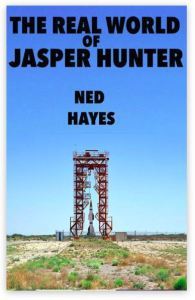 more about The Real World of Jasper Hunter >>
more about The Real World of Jasper Hunter >>
Sunlight seeps out of the edge of the dark sky and leaks across the Black Rock Desert. Everywhere the light touched turns white, the heat of the day taking over the ground. I’ve never watched the sun enter the sky before. It is an astonishing thing to see: colors rise with the sun, blossoming out of its slow ascendance. Oranges, purples, yellows and deep reds. They oscillate out of its orbit slowly, and if I speed it up in my memory, I realize that they are like waves emerging from a rock thrown into deep water. The colors bleeds into the sky, wavering out of the bright circle of light at the center of the horizon. It is the most beautiful thing I’ve ever seen. A sunrise: my first one. I wonder if they have anything like this in the Real World®, behind the goggles where Jamie liked to live. I’ve never been online, but she spent most of her life there.
Serenity, the launch vehicle I named for a spacecraft on an old TV show, rests like an immense skyscraper-sized spear on the makeshift launch pad of the Black Rock Desert hardpan. The sight of Serenity fills me with hope, and with unexpected sadness. I am surprised we have arrived so quickly at the culmination of our plan. Jamie had a plan, and I followed her plan precisely. I thought I’d go with her, but instead I was now a rocket launch engineer, the functional ground control supervisor. Not a spaceman after all.
Jamie needs me on the ground: she needs me to do the count-down. That’s the only human task left in the list. The distributed autonomic functions of the drone team Jamie trained was how we can operate such a large endeavor with a skeleton crew. Jamie’s knowledge is distributed here in this huge moving flock of metallic and plastic components, all of them motivated by one single directive – launch the rocket. They will keep focused on that task, even if it burned up half of them at ignition.
Of course, I am trusting a lot – I am trusting in Jamie’s thinking that has been imprinted into every silicon brain that is helping me. What if she is wrong? But these perfect tools of Jamie’s seem to know exactly what they are doing: they move faster than I do, and cover more tasks. Jamie ran through every build and launch scenario with them one hundred and forty-seven times, training them to be more diligent every time. So now I have to trust, I have to let them do their jobs. Despite that knowledge, I keep nervously checking on whether or not we’re on track for the launch window.
Every time I check, we are exactly on target. Launch window: 00:29:42. Stay on target. Stay on target.
Bright LED work lights and the rapidly moving drones encircle Serenity’s position, making minute adjustments. They’ve been working on auto-pilot all night long. Now at dawn, they cluster and buzz, blinking fireflies that fade in the rising light. The enormous bulk of the thing can only be seen in relief, shadow against shadow, the blinking lights illuminating just one panel, and then another. The great work is almost complete, just in time for sunrise. 6:17 a.m. is the launch window target time that Jamie chose many months ago, back when I was in Los Angeles, before we stole this spacecraft from NASA, along with all the components for the launch. 5:47 a.m. is sunrise this time of year here at Black Rock Desert, on the playa. We have exactly half an hour to launch.
Every now and then I turn and peer at the rising sun. Light slides slowly across the desert towards the launch site. I do know that when the sunlight arrives, we’ll be within moments of the launch window. We’re almost ready: the drones and I had been working on this for weeks before Jamie arrived. By the time I went and got her in Arizona, the spacecraft was nearly ready.
Jamie is already loaded in Serenity. Her cockpit looks like a tiny bubble of metal and glass attached to a gigantic edifice of fuel-filled tanks. She’s strapped in securely to her astronaut seat, resting on top of a gigantic fuel-bomb waiting only for a spark. And the companions she has at the top of this great stack of explosive substances is her pocket Jamie-Com and a pair of walking drones. Those little tools can temporarily run the cockpit in case Jamie can’t in her condition. They can take care of things while she’s not conscious, in case there’s a course change or an unexpected event.
The sun is rising higher. The tallest spike on the spacecraft – the tracking navigational antennae – is the first piece to be touched by sunlight. The bright line of light creeps towards us like liquid across the desert floor. The dark spar of the antennae on the spacecraft switches from black shadow into glowing light in a heartbeat. Then the metal of the body of the spacecraft starts reflecting the light. It becomes as bright as a sparkling mirror. Below that glowing spark of antennae, the launch gantry around Serenity remains a colossal darkness against other darkness, the shadow it is beginning to cast reaching all the way out to me, as I move gradually back further to the safe zone beyond the launch site. The sun is still rising, shades wavering out across the sky, an expanding tidal zone of color.
I can’t watch every variation that emerges from the rising sun, and I can’t pay attention to what the spacecraft looks like in the sunlight. I am too busy: I am double-checking the cables attached by the powered drones, and triple-checking the fuel lines, to ensure complete seals on the fuel, and then under my own power, I get a forklift and remove the loading gantry that we used to get Jamie in the ship. Finally, I spend some time moving my dashboard and observation components behind the blast shield, keeping my work safe from the approaching cataclysm. Almost there: 00:16:32
Now sunlight entirely covers Black Rock Desert. It has become a vast pool of brightness: the white desert light fills every pixel I can see. Every color is now burned away by the brilliant sun. This is the moment we’ve been waiting for. I put the dark goggles on, to protect my nearly useless eyes from the bright blast, but also to protect me from the glowing sunlight. I do a final count-down at 00:00:10.
I report the results. There’s no negative response from Jamie. All is well. I run them again, double-check my location, nearly a half-mile back from the launch site. I lift the protective cover over the final connection and press the button. The electronic countdown runs through rapid numbers, blinking down, until it stops. 00:00:00.
Nothing happens for a long breath. My heart thumps terribly. I remember the last rocket that I built with Jamie, the one that blew up at the Rose Bowl in Pasadena and lit the houses on fire. It looked just like this before it blew to smithereens. That was Jamie’s fault, that time. What if this one becomes my mistake?
I can hear the hissing of the fuel through the bulging lines, the continuous rumble of some great breath under the craft, the sullen anger of pressure and expansion. Billows of blazing cloud erupt from underneath its body. I remember that other rocket – how it waited there misshapen, standing tall on its tail of explosion for a long moment just before the fire ruptured in every direction and the cockpit ripped itself apart. The rocket skin became a million shards of torn metal. Everything torn apart.
Ignition. There is a whispering hiss that fills the desert, as if the light itself is speaking. Like ancient words spoke too fast together to understand: a final incantation. The vast sizzle of sound builds a terrible anticipation. Then smoke or steam is blasting out of the bottom of the spacecraft as the compressed liquid bursts into flame. There is a reverberating rumble that feels at first as if it emerged from the distant mountains. The rumbling grows like distant thunder. My teeth chatter from the vibrations of the sound, and now I can see fire growing under the rocket body, white and orange jetting out from a titanic blast furnace.
This rocket hasn’t exploded yet. I can feel my pulse in my temples, in my throat, nearly bursting out of my chest, as I wait again for that terrible explosion. Thump, thump, thump. My heartbeat is in sync with the billowing flames.
Nothing is moving. The rocket does not seem to be moving an inch upward. We have failed once more. This time, the failure will all be on me. Jamie didn’t work on the final preparations, Jamie didn’t do the final check or the final countdown. Thump, thump, thump. And the sound is a distant hiss to me, the hissing out of all my hopes and dreams to leave the online Real World® behind forever.
Between one heartbeat and the next, the ground shakes dreadfully. The world is caving in around me. Like the loudest thunderclap I could ever imagine, rising louder and louder until I throw my hands over the safety ear protection, holding it even tighter to my head, hoping my head won’t burst apart from the terror of the blast. The earth is opening up underneath me, the sky itself splitting apart from the light and the sound. My teeth meet and chatter at the sound, my jaw aching with the continuous booms of the explosions. The cloud is growing higher and brighter.
Then the billows of flame and dust grow immensely larger, obscuring the rocket and the launch vehicle itself, and then I can see the tip of the rocket sticking up above the cloud, and then more of it is showing, and then I realize that the rocket is lifting off the ground, and that’s why I can see more of it now. The dark skyscraper on the launch pad rises into the air on a bright tower of flame.
Suddenly there is a great whooshing sound as the rocket lifts entirely out of the cloud of flaming gas and debris and for a split second, it is almost as if it is resting on top of that cloud, just waiting there, and then almost faster than my eyes can track it, it is farther up in the sky, and then farther up, moving faster and faster, and then it punches through a small white cloud I had not even realized was there, and then I can see it far above me, a faint silver pencil with a jet of flame shooting continuously out of its tail. I blink and stare upwards.
Finally, Jamie is not in anything virtual, finally, she is fully absent. She is gone.
Around me, the entire launch site fills with billows of blowing powder and white smoke. The world is covered in ash and dust, it blows past me, a sandy cloud rushing as hard as a hurricane. I shut my eyes behind the goggles, feeling the grit scrape past my face, impact my coverall with a million tiny projectiles.
And then I realize I need to pay attention to the trajectory, and I run back to my screen and my remote control launch dashboard. At the board, a half mile from the site, the dust has lessened. I can see again. On screen, I can watch the computer plotting the rocket ship’s path as a series of dots and then a line, and it is perfect, exactly perfect. I can also see the image of the rocket from the remote-control telescope I had installed on the side of the mountain across the playa, the lens automatically tracking the ascent of the rocket. I can see it hanging there in mid-air, as if it is still, a svelte silver thing that moves in and out of focus as the telescope attempts to hold onto its image and moves with it. The telescope jerks back and forth, finding the ship in its viewfinder, holding tight to its swerving trajectory.
Yet the rocket is on the right path, it has not deviated from the planned trajectory. It is going to follow its instructions perfectly. And only I know its instruction set.
It is a similar instruction set to that I created when I sent the deer’s body back into the woods. I wrote a series of instructions and variables that could be summarized as “Don’t stop moving until something stops you.” If we achieve upper atmosphere, and then space, this rocket and its payload will not go into orbit around the earth. Instead, this rocket will continue blasting out to the perigee, and then – with any luck – will push past the gravitational pull of the moon. And then Jamie’s ship will blast into the solar system itself, into the solar wind, before it has exhausted all primary rocket fuel.
I stare down at my monitor, my sight dimmed and uncertain, still wavering with the after-image of the glowing tower of flame. The rocket seems to be on a proper trajectory. But when I glance upward, the tiny dot of flame seems to be arching overhead. I stop looking at the black and green lights on my monitor and just stare upward at the departing Serenity. For a long time the rocket remains visible, a star against the faint clouds. It is a bright miniature planet moving across the sky, winking out of sight in the dim early dawn, fading into the interstellar objects that surround it.
“Apogee – earth parking orbit achieved,” comes an automated report from the rocket. The sound echoes in my headset. It is Jamie’s recorded voice, and I know I’ll never hear her voice again. “Releasing first tank, commencing fire for second tank.”
Serenity has achieved first stage. We’ve launched a rocket into orbit. Now Jamie is going to leave the Earth forever. I never thought it would be possible to leave the Real World® behind, but now I’ve helped Jamie finally do that awesome thing. I miss her already, I will miss her voice and her face, and her flowing robes and all that she brought into my life. I didn’t know that missing her would feel like an ache in my mind, a hollow in me that can never be filled. I look up. Jamie is in the stars now. Forever.
Eighteen months ago, I didn’t know that spaceships really existed, or that I’d be stealing one from NASA’s Ames Research Center in Mountain View, California. Or illegally violating federal boundaries around the Black Rock Desert and setting up a launch site in the middle of the Black Rock playa. Or blasting off from Earth. I didn’t know any of this would happen. Back then, I also didn’t know what would happen to Jamie, and I didn’t know the truth about Jamie. If you’d told me everything then, I wouldn’t have believed you.
Eighteen months ago, I thought the Real World® was the only world worth caring about. But now I know that there’s a whole world out here of living creatures and things to build and books to read and missions to go on. And spaceships to steal.
Want to read MORE from the forthcoming novel?
Sign up for updates about << The Real World of Jasper Hunter >>

Special Preview of a New Novel: The Real World of Jasper Hunter was originally published on Ned Hayes
April 15, 2019
Sinful Folk: Spanish Language Edition
I’m very excited to announced that Sinful Folk, my historical novel set in medieval England, will finally appear in Spanish as Pueblo Pérfido, with the original English jacket and the original layout and style.
For those Spanish-speaking readers, here is some of the details about the Pueblo Pérfido edition:
«Una exquisita obra histórica de suspenso narrada por un personaje valiente y carismático que, con su historia, llega al corazón desde la primera página hasta la sorprendente revelación final. Una novela increíble en torno a un misterio en verdad fascinante y sin resolver de la Edad Media ».
—Karen Maitland, autora de los best seller The Owl Killers y Comitiva de Embusteros
«Brillante, profunda, con determinación e inteligencia. Este misterio alucinante llevará a los lectores a pasar las páginas sin cesar hasta llegar a la última oración. Extraordinaria ».
—Ella March Chase, autora de los best seller
The Virgin Queen’s Daughter y Three Maids for a Crown
En Diciembre de 1377, cuatro niños mueren cuando su hogar se quema en un incendio sospechoso. Aldeanos viajaron cientos de millas a través de Inglaterra para exigir justicia. Pueblo Pérfido es la historia de este terrible viaje en medio del invierno desde el punto de vista de Mear, una ex monja quien ha vivido durante la última década disfrazada de hombre mudo, tranquilamente criando a su hijo en esta aldea aislada. Durante largos años, ella ha ocultado su identidad, su existencia y su pasado. Pero en este viaje, ella encontrará la fuerza para reclamar la promesa de su pasado y crear un nuevo legado. Mear comienza su viaje, plagada de terror y angustia, y termina en triunfo y redención. Esta destacada y admirable novela escrita por Ned Hayes, ilustrada por galardonada autora e ilustradora Nikki McClure, Pueblo Pérfido presenta una visión perspicaz y compasionada de la era medieval.
Sinful Folk: Spanish Language Edition was originally published on Ned Hayes
March 16, 2019
Poem: The Present, W.S. Merwin
W.S. Merwin 1927-2019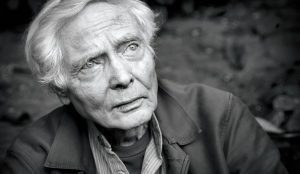
The walls join hands and
It is tomorrow :
The birds clucking to the horses, the horses
Doing the numbers for the hell of it,
The numbers playing the calendars,
The saints marching in,
It seems only yesterday,
when what I keep saying to myself is
 Take a leaf from the fire, open
Take a leaf from the fire, open
Your hand, see
Where you are going,
When what I am trying to find is
The beginning,
In the ashes,
A wing, when what we are looking for
In each other
Is each other,
The stars at noon,
While the light worships its blind god.

[Read more Poetry Posts]
Poem: The Present, W.S. Merwin was originally published on Ned Hayes


